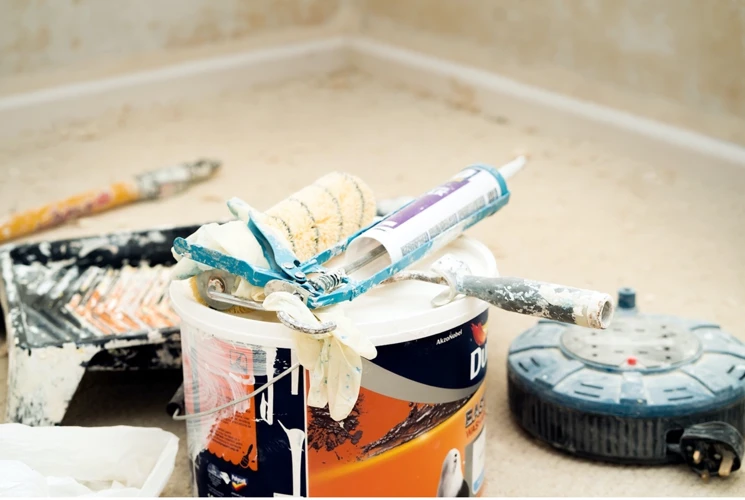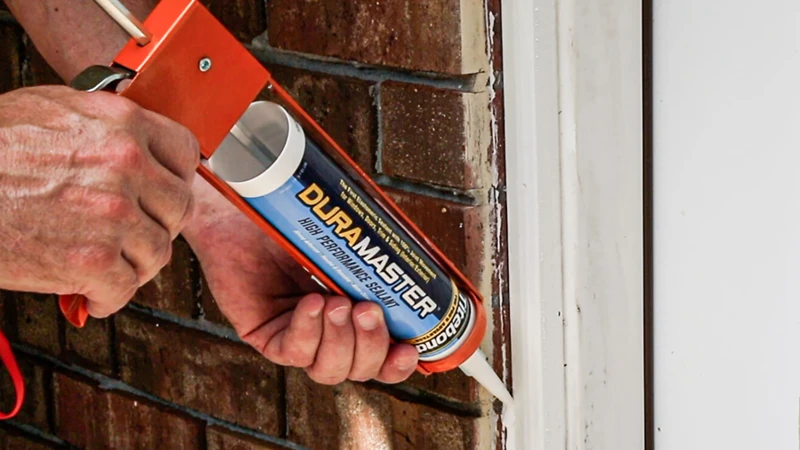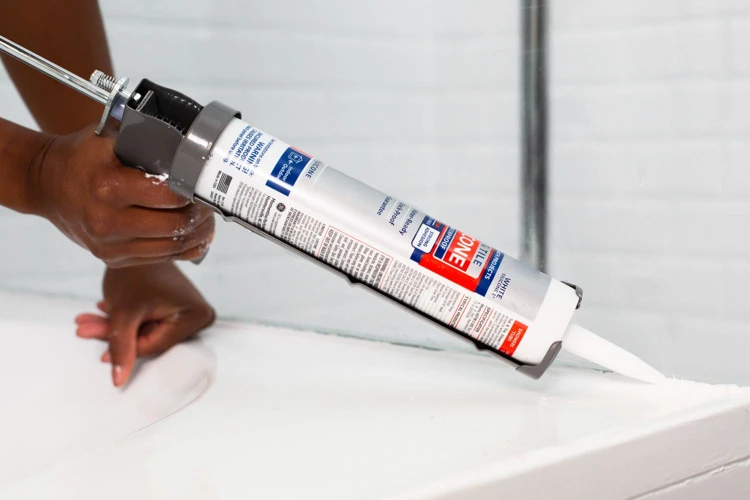When the time comes to refresh the exterior of your home with a new coat of paint, the importance of preliminary steps cannot be overstated. Among these, exterior caulking and sealing for painting stand out as critical processes that ensure both the longevity and aesthetic appeal of the paint job. Neglecting these steps can lead to costly and unsightly outcomes, emphasizing why they are indispensable in home maintenance.
Understanding Caulking and Sealant: Definitions and Differences
Caulking and sealant might seem interchangeable, but they serve distinct purposes. Caulking is typically used to fill gaps and prevent air, water, and pests from entering a home. It’s a pliable material that allows for the expansion and contraction of the home’s exterior surfaces. Sealant, on the other hand, is often a silicone-based product designed to create a waterproof barrier. While both are used in sealing for painting, they are selected based on the specific needs of the surface and environment.
Pre-Paint Prep: The Benefits of Caulking and Sealing Exteriors
Before a brush ever meets the surface, painting and sealing exteriors is a crucial preparatory step. The benefits of caulking are manifold, including the prevention of water damage, improved insulation, and the creation of a smooth substrate for painting. Sealing gaps and cracks ensures that the finished coat of paint looks clean and professional while also extending its life.
Exterior Caulking: Best Practices for Weatherproofing Your Home
Caulking for weatherproofing your home is not just a recommended practice — it’s a necessity for those looking to protect their investment. The best practices involve inspecting the home’s exterior for any signs of damage or wear and addressing these areas with high-quality caulk. This attention to detail prevents moisture intrusion, which can cause rot, mold, and a host of other issues.
Comprehensive Guide to Exterior Caulking for Optimal Paint Adhesion
For paint to adhere properly and last through the seasons, thorough preparation of the surfaces is essential. This comprehensive guide will walk you through the steps to ensure your exterior is well-protected and primed for a fresh layer of paint.
Caulk vs Sealant: Choosing the Right Material for Your Project
Understanding the distinction between caulk vs sealant is the first step in selecting the right material for your project. While caulk is more rigid and suitable for areas with minimal expansion and contraction, sealant provides flexibility and is ideal for joints that experience movement. The choice depends on the location and the specific requirements of the surface in question.
Step-by-Step: Paint Prep with Sealing
Paint prep with sealing is a methodical process that, when executed correctly, can drastically improve the outcome of your painting project. It involves cleaning the surfaces, removing old caulk, applying new caulk, and letting it dry before the painting begins. This sequence ensures that the exterior is well-prepared for the new coat of paint.
Best Caulking Techniques for a Durable Exterior
To achieve a durable exterior, the best caulking techniques involve using the right tools, such as a caulking gun and a smoothing tool, to apply the caulk evenly and smoothly. It’s important to cut the caulk tube at the correct angle and to work in manageable sections to ensure a consistent application.
Maximizing the Benefits of Caulking in Exterior Painting
Integrating caulking into the painting process is not merely a preparatory step; it’s a way to enhance the entire project. By doing so, you can maximize the benefits and ensure your home not only looks fantastic but is also well-protected.
Sealing for Painting: Ensuring a Long-Lasting Exterior Paint Job
Sealing for painting is a key factor in ensuring a long-lasting exterior paint job. By effectively sealing cracks and joints, you prevent moisture and pests from undermining the quality and integrity of the paint. This proactive measure maintains the paint’s appearance and function over time.
How Exterior Caulking Contributes to Energy Efficiency and Aesthetics
Aside from its protective qualities, exterior caulking also contributes to energy efficiency by sealing air leaks. This can lead to significant savings on heating and cooling costs. Aesthetically, it provides a neat and seamless finish, ensuring that the paint job looks professional and complete.
Choosing the Right Products: Exterior Paint Sealant and Caulk Recommendations
Selecting the appropriate products is a critical step in achieving the best results for your home’s exterior. With a plethora of options available, it’s essential to choose products that are not only high-quality but also suitable for the specific conditions of your project.
Sealing Exterior Paint Job: Selecting High-Quality Sealants
For a sealing exterior paint job, the market offers a range of high-quality sealants designed to withstand the elements and adhere to various surfaces. Choosing a sealant that is resistant to UV rays, temperature changes, and moisture is paramount to maintaining the paint’s durability.
The Best Sealants and Caulks for Different Exterior Surfaces
Different exterior surfaces require different types of sealants and caulks. For example, a silicone-based sealant may be ideal for areas exposed to high moisture, while a polyurethane caulk could be better suited for surfaces that need to withstand heavy wear and tear. It’s important to match the product to the surface for optimal performance.
Maintenance and Troubleshooting: Ensuring Longevity of Caulking and Sealant
Maintenance is the key to prolonging the life of caulking and sealant. Over time, these materials can deteriorate, but with proper care and timely intervention, you can maintain the integrity of your home’s exterior.
When to Reapply Caulk and Sealant to Maintain Exterior Paint Integrity
Knowing when to reapply caulk and sealant is crucial for maintaining exterior paint integrity. Generally, it’s advisable to inspect the caulking and sealing annually and touch up any areas that show signs of wear or damage. This simple step can greatly extend the life of your paint job.
Common Caulking Challenges and Solutions
Homeowners may encounter common caulking challenges such as shrinkage, adhesion issues, or the caulk not curing properly. Solutions include properly preparing the surface, choosing the right type of caulk for the conditions, and applying it in the right environmental conditions to ensure proper curing.
When it comes to home maintenance, painting is not just about choosing the right colors; it’s also about the preparation that ensures a long-lasting finish. If you’re planning an exterior painting project, understanding the importance of caulking and sealing in exterior painting is essential to protect your home from the elements. But don’t stop there — make sure to read about the essential role of sanding in interior painting and the importance of proper ventilation during interior painting projects to guarantee the best outcome. And if you’re looking for creative ways to enhance your space, our guide on using stencil patterns in home decor can inspire you to add a personal touch to your interiors.
Conclusion: The Integral Role of Caulking and Sealing in Exterior Painting Success
In conclusion, the integral role of caulking and sealing in exterior painting success cannot be overstated. These processes are the bedrock upon which a durable, attractive, and protective paint job is built. By following best practices, selecting the right products, and maintaining the sealant and caulk, your home’s exterior can stand the test of time, weather, and wear.




